Montessori Practical Life: The Spooning Exercise
I am so excited to have Beth Holley back for another Montessori Practical Life Lesson Plan.
You can see the full collection of Practical Life Lessons here, and you can find many different ways to apply those practical life skills in our Kids’ Kitchen page.
Today, we are focusing on the Spooning Exercise and it’s variations.
In our previous post on practical life skills, we mentioned attracting your child’s attention by a clear presentation, in which you use precise movements. We suggested that analyzing the steps in an activity creates clarity. You can show the main subdivisions of a task by slightly pausing between steps.
Your slow and careful movements will also convey respect for the materials. Just as we show taking care of all the people and living things in our environment, we show taking care of all our material things.
We can’t assume that the child knows what it means to “take care” of items. We must take the time to show what this means: carrying or holding objects in a particular way, walking carefully with items in our hands, placing them gently on the table or rug, handling things one at a time, if appropriate, and so on. Each time you present a new activity, these points of interest are reiterated, and an atmosphere of care is cultivated.
Our next write–up on spooning from one container to the other offers another opportunity to balance items on a tray and to lightly handle breakable objects (bowls).
How to Present the Spooning Exercise
Direct Purpose: to develop the movements and hand control needed for manipulating a spoon;
Indirect Purpose: independence and concentration.
Material:
- two identical bowls, one of them ¾ full of a grain, lentils, or fine beans (here we used dyed barley from our Rainbow Sensory bin);
- a child-sized tray with a slight edge or lip for grasping, 12” or less in width;
- an appropriately sized spoon
Age: 2 ½ – 3
Presentation
1. Carry the tray containing the spoon and two bowls (one with beans) to the table and gently set it down, such that the beans are in the left-hand bowl.
2. Sit, then pick up the spoon with your thumb on top and middle finger supporting the handle.
3. With the opposite hand, steady the left-hand bowl full of beans.
4. Scoop up a spoonful of beans and pause over the bowl.
5. Slowly move the spoon over to the center of the empty bowl, lower it, then tip the spoon such that the beans slide off.
6. Repeat until the first bowl is empty. You may show tipping the left-hand bowl toward you to scoop the last remaining beans.
7. Put the spoon down on the table.
8. With two hands, place each bowl above the tray, and look at the tray and table to see if any beans have spilled. Use a pincer grasp to pick up any spilled beans.
9. Replace the spoon and bowls, and orient the tray for the child.
10. Invite the child to try.
Points of Interest:
- Does the child hold the spoon well?
- Does she scoop a manageable amount onto the spoon?
- Can she balance the beans on the spoon while it is in motion?
- Does she tip the spoon to empty it?
Note: Personally, I try to use grains or beans of a dark color and a tray of a lighter or contrasting color (or vice versa), so that the child can more easily see when the grains have spilled onto the tray (or you can dye the grains as we did here). Though I prefer glass items, plastic trays often give an auditory feedback when beans or other items fall on them.
Encourage your child to repeat this exercise as many times as she likes, then end by showing how to return the tray to its designated place on your shelves. If your child is drawn to repeating this exercise in your upcoming work days, then it is a good match for her needs at this time!
Spooning Exercise Variations
When your child has mastered the basic spooning exercise, you can start to introduce variations!
What about a different shapes of spoon?
Or offering different sizes of bowls, encouraging children to stop spooning grains when they see that the second bowl is filled, which is a great willpower and observation exercise.
And for a real challenge, what about chopsticks?
The chopsticks and crane chopstick rest in the above activity were purchased from Montessori Services, which also has a still available on Amazon on sale. (The chopsticks have now sold out from Montessori services but are still available on Amazon.)
To learn more about Montessori theory, please visit Beth’s blog A Montessori Lexicon, and you can also find her on Teachers Pay Teachers.
Have you already done the practical life lesson for carrying a tray? Then you’re ready to move onto the analysis of movement!
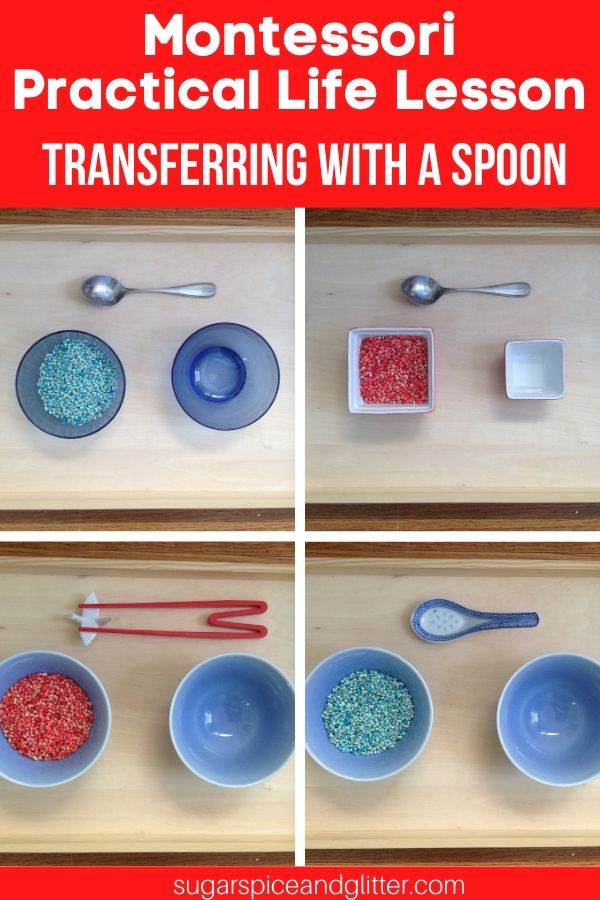
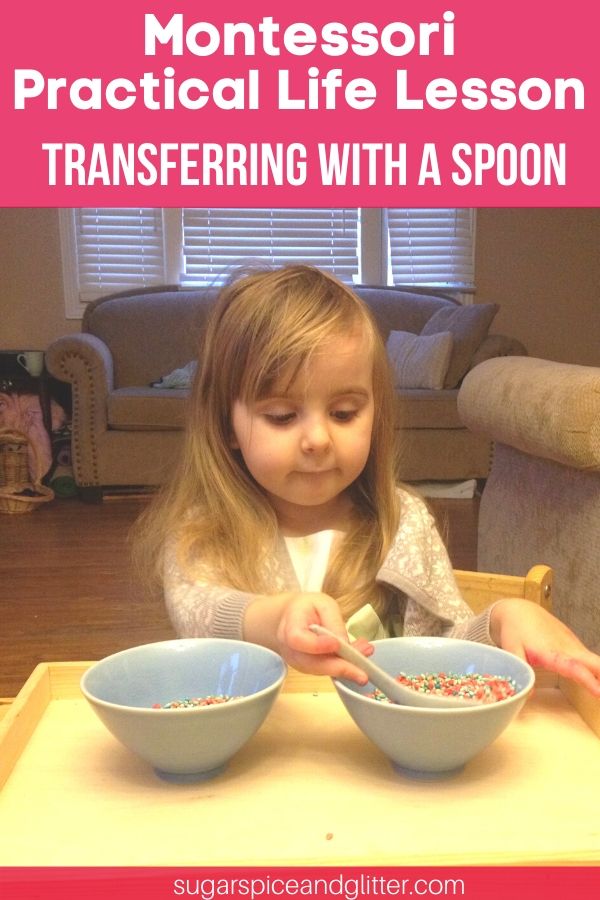
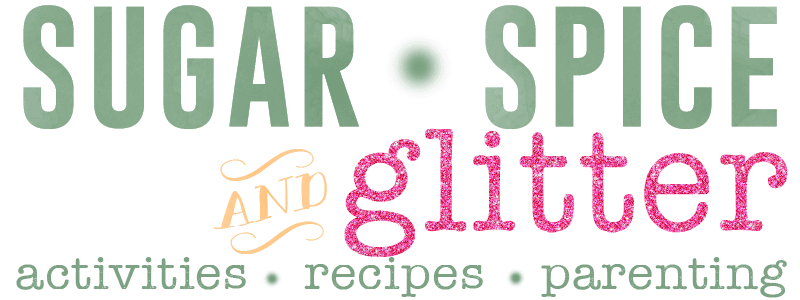
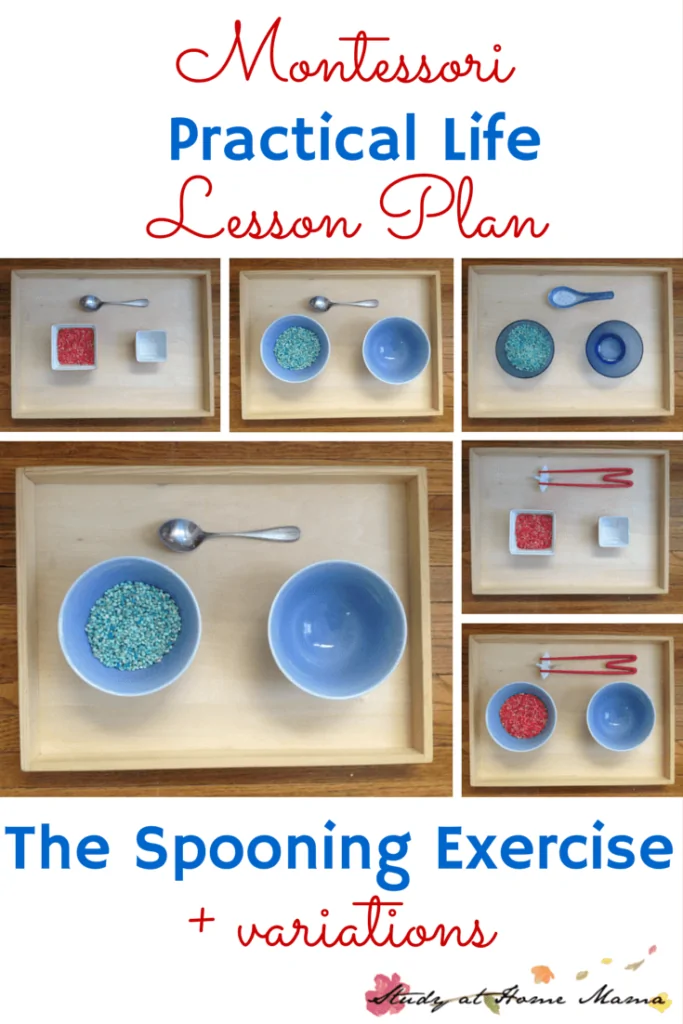
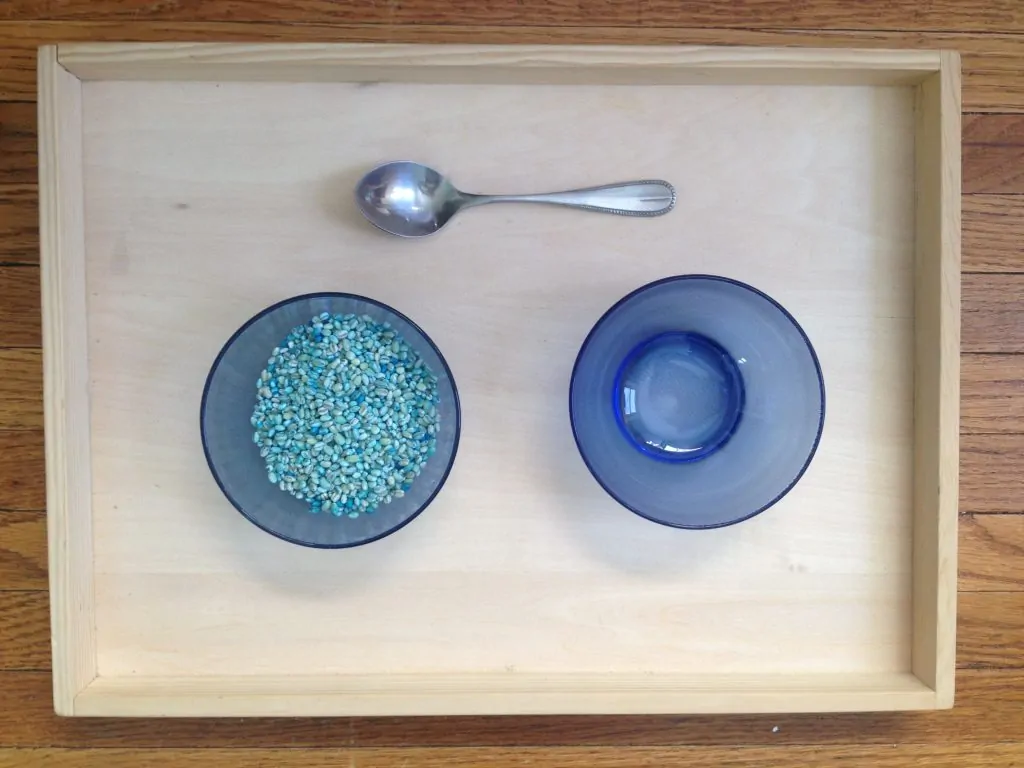
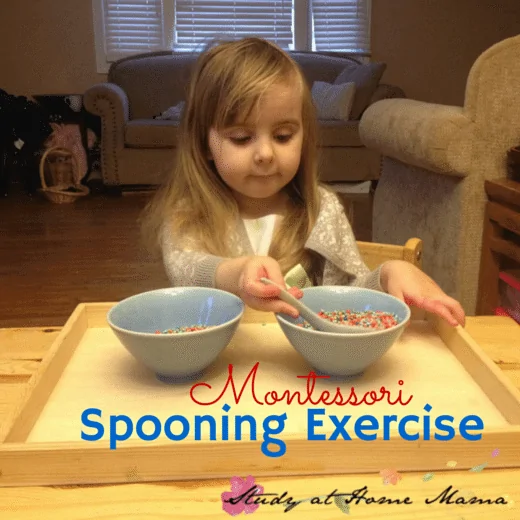
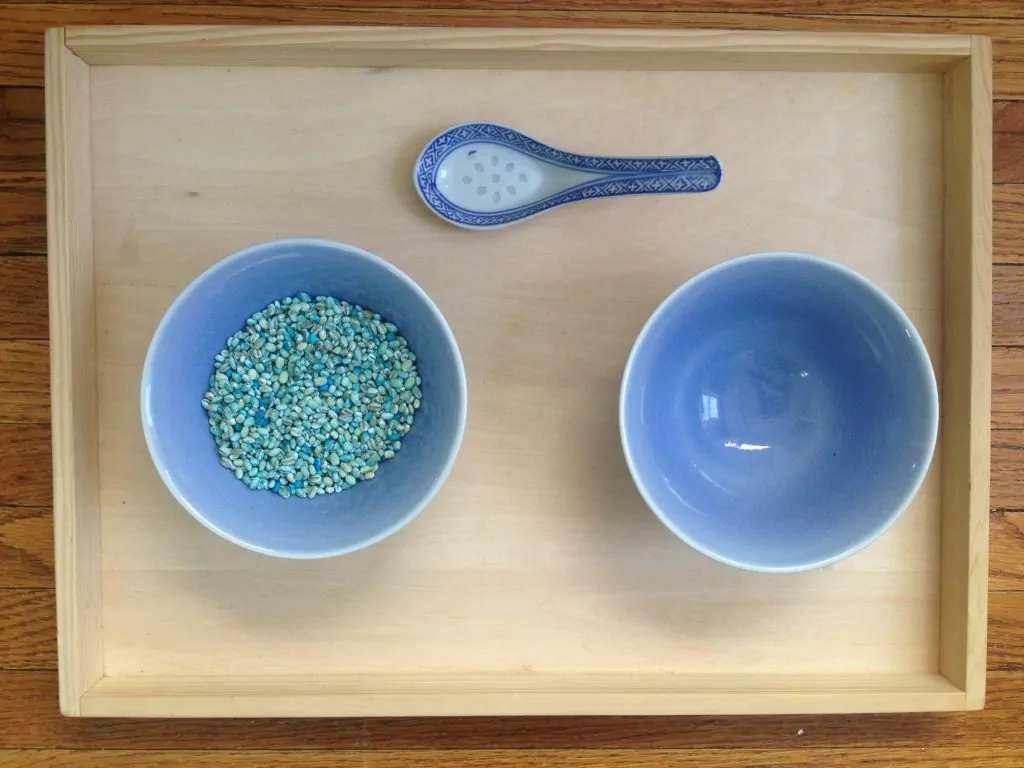
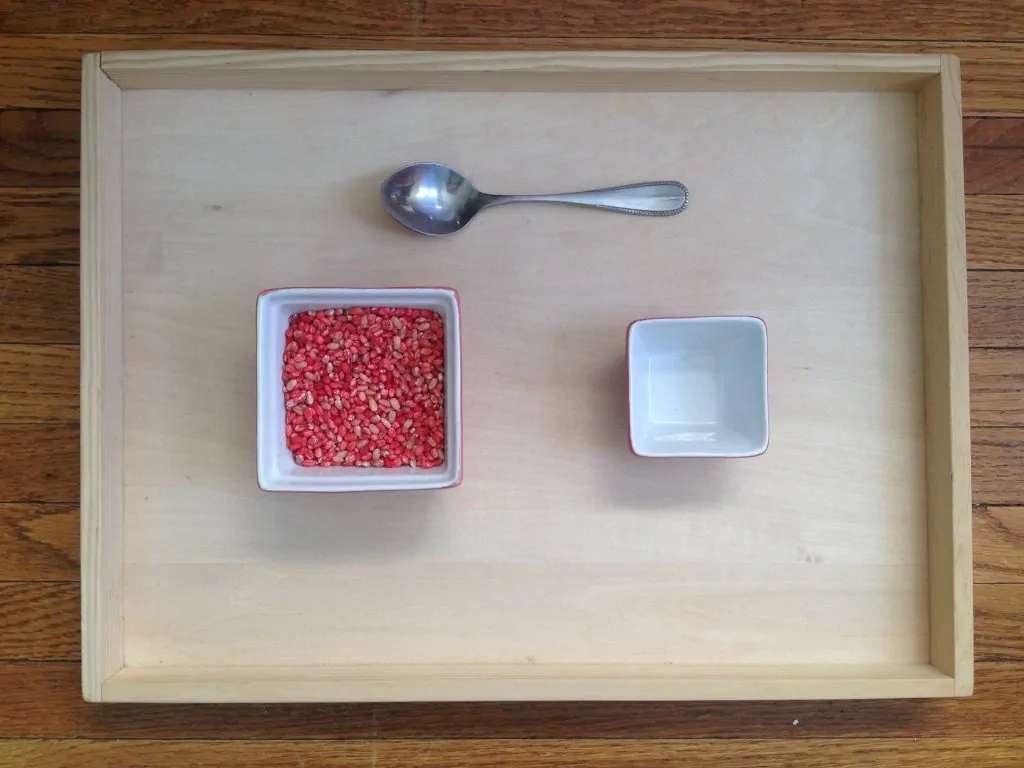
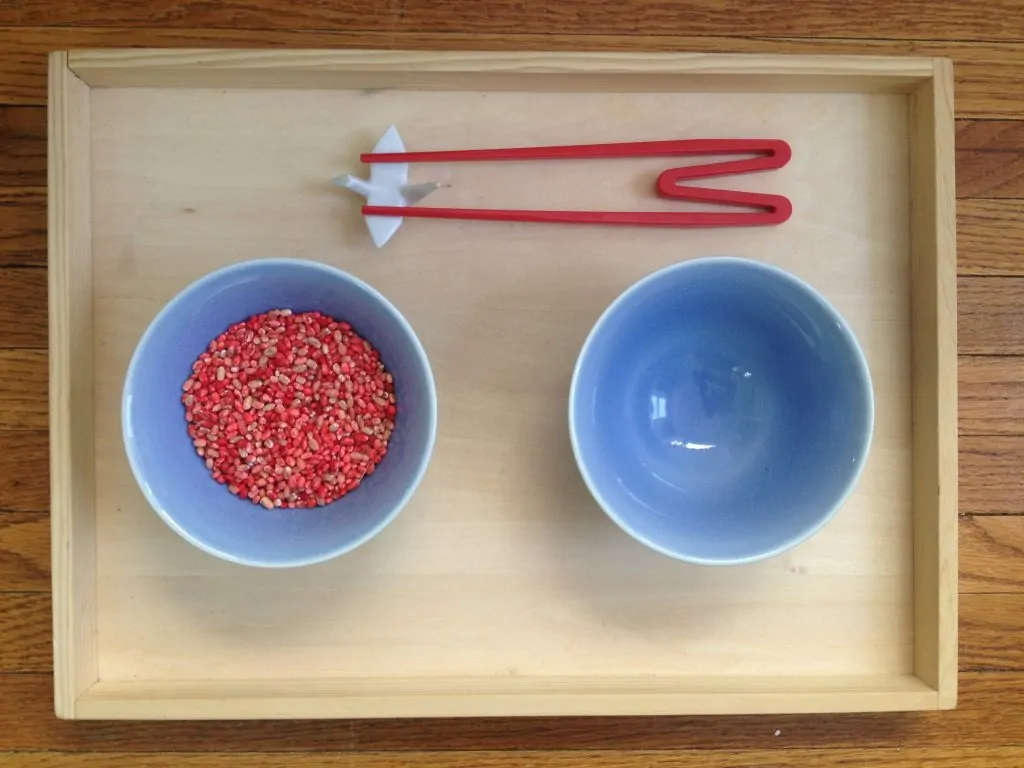
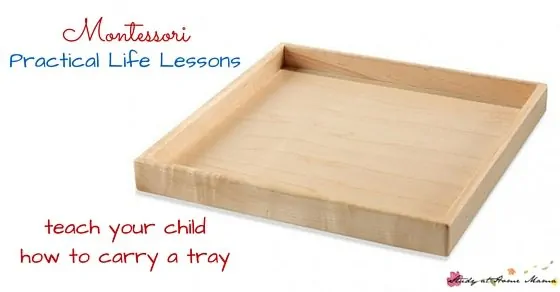
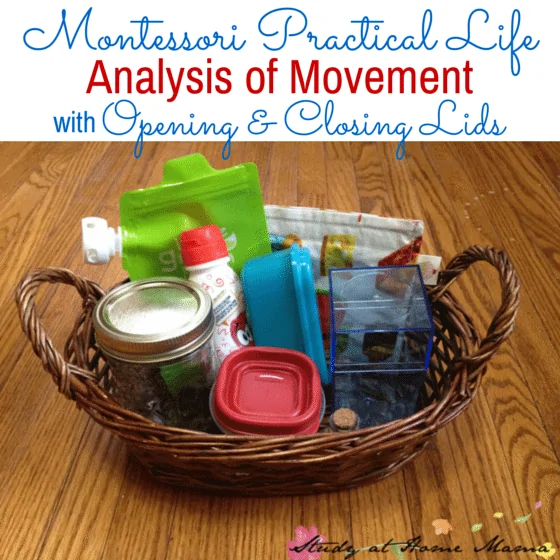
Seriously it’s very helpful for those people who opening nursery
I am excited to try this activity today with my 2 year old (26 months). I did want to mention, the chopsticks you linked are no longer available, I hope to find some that are similar for my 2 year old and 10 year old. Thanks for sharing this post!
Hi Jessica, thank you for letting me know! I found the same brand on Amazon but they are more expensive now: https://amzn.to/3rVS7zA
There’s also ones like this that have characters at the top that can eventually be removed when your child has mastered using chopsticks: https://amzn.to/3OzVVAh